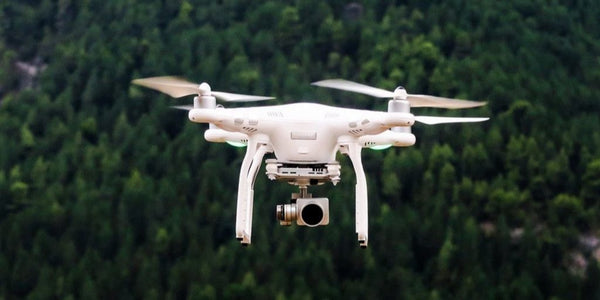
The New Face of Drones
The use of drones continues to be a debated topic within the political community. However, while they may have a negative connotation, their helpfulness has far exceeded their potential negative ramifications.

One of the most interesting applications of drones has been found in the ability to track the spreading of disease patterns in Africa. One of the most widespread infections misquotes can carry is that of malaria. In enabling scientists to detect the changing direction of mosquitoes, drones provide the ability to better map out how people groups are affected. In the mapping process, doctors can compare patient records with the area, and that allows them to understand what measures to take to prevent an outbreak (Chandler, n.d.).

Another way drones can be used by scientists to help refine human response to natural disasters can be found in NASA’s research on hurricanes. This technology successfully equips researchers with continuous data that gives not only the ability to predict atmospheric conditions, but to best understand storm intensity from minute to minute (Chandler).
Drones can also be used to aid police officers in their pursuit of criminals. Recently, a group of policemen in North Dakota attempted to arrest several people who were underage drinking and driving. In their chase, however, the criminals fled into a cornfield. Typically, a pursuit on foot would take several more officers, and could potentially result in little to no apprehension of the suspects. Fortunately, though, a drone was available, and the officers able to track the underage drinkers within minutes, which yielded immediate arrests. Not only can drones be a helpful reactive device keeping others safe, it can also serve as a proactive tool preventing disasters, too (“Top 5 Practical Applications,” 2015).
Oil and natural gas companies dedicate a considerable amount of time and effort to preventing spills or explosions. However, with large, complex machinery, even the highest precaution may not prove effective. With the continuous updating of images and information, drones allow engineers to pinpoint the problematic areas in the pipeline routes, thereby enabling them to detect and address the situation immediately.
In order to promote understanding and help facilitate more helpful information about drones, PCS Edventures has recently developed relevant curriculum for Saudi Arabian STEM-based after school projects. These projects can be seen as an ongoing effort with Saudi Arabia to maximize student interest and educational development. As teachers get the professional training necessary to bring students along, it is hoped that more of these students will seek employment in technical fields. “The Saudi Science Centers will provide comprehensive professional development for teachers and after-school activities for students that emphasize inquiry and assessment, aligned with world-class standards for science learning” (“PCS Edventures,” 2014).
Keeping this in perspective, there is much to be told about the future of drones and how they impact the world. PCS is sure to continue to be a leader in the field of innovation, not just in curriculum or products, but in a shared vision to see more engagement with STEM across all ages and professions.
References:
Chandler, N. (n.d.). 10 non-murderous things drones do every day. Retrieved September 18, 2015, fromhttp://science.howstuffworks.com/transport/flight/modern/10-non-murderous-drones.htm#page=0
Top 5 practical applications for drones of the week. (2015, June 1). Retrieved September 18, 2015, from http://flyver.co/top-5-practical-applications-for-drones-of-the-week/
PCS Edventures, Inc. announces $1MM Saudi Arabia stem project. (2014, July 16). Retrieved September 18, 2015, from http://globenewswire.com/news-release/2014/07/16/651106/10089631/en/PCS-Edventures-Inc-Announces-1MM-Saudi-Arabia-STEM-Project.html
By: Lindsay Reeves








